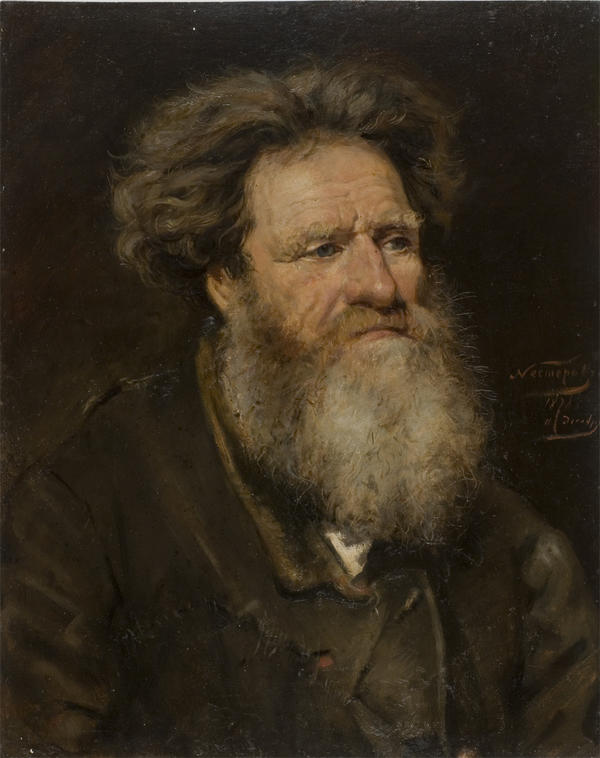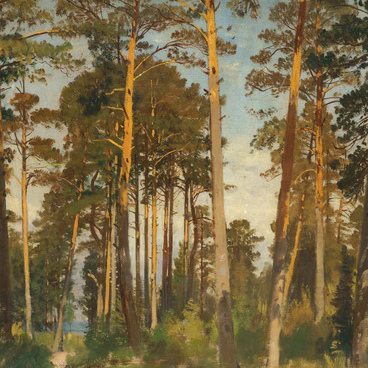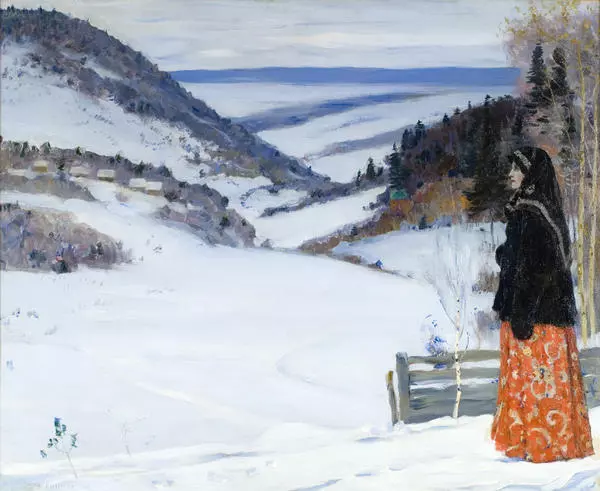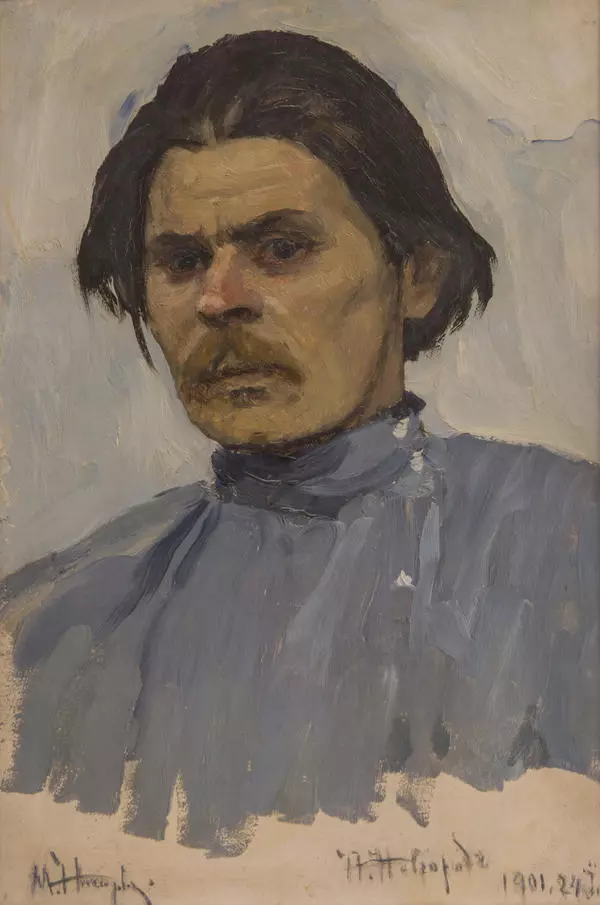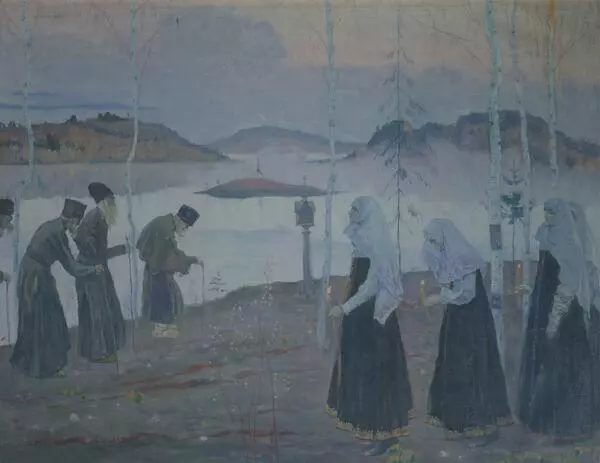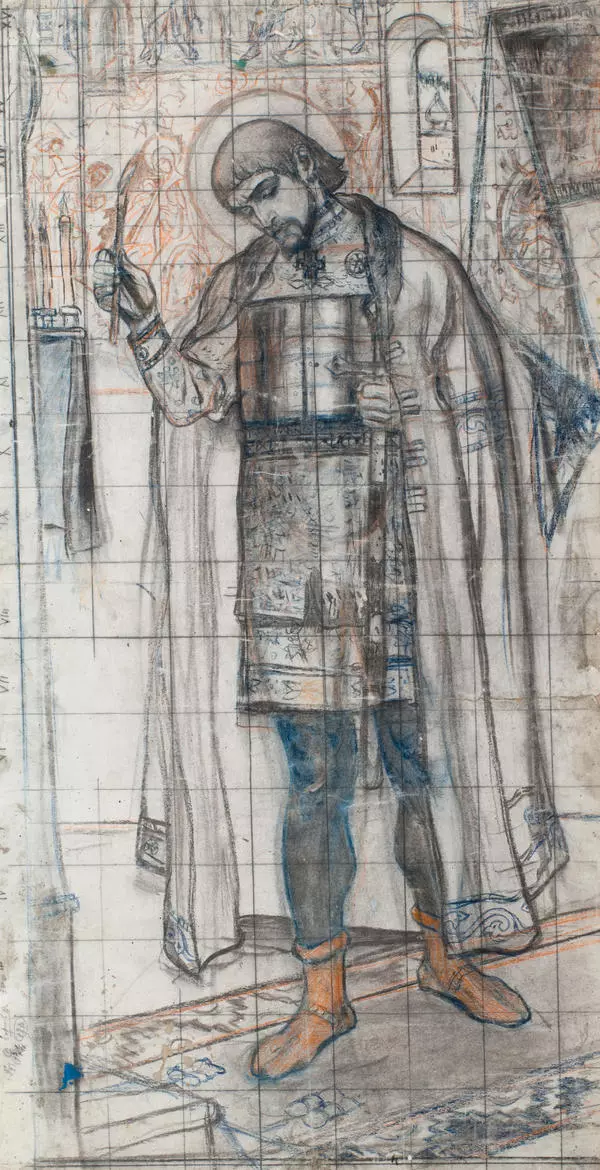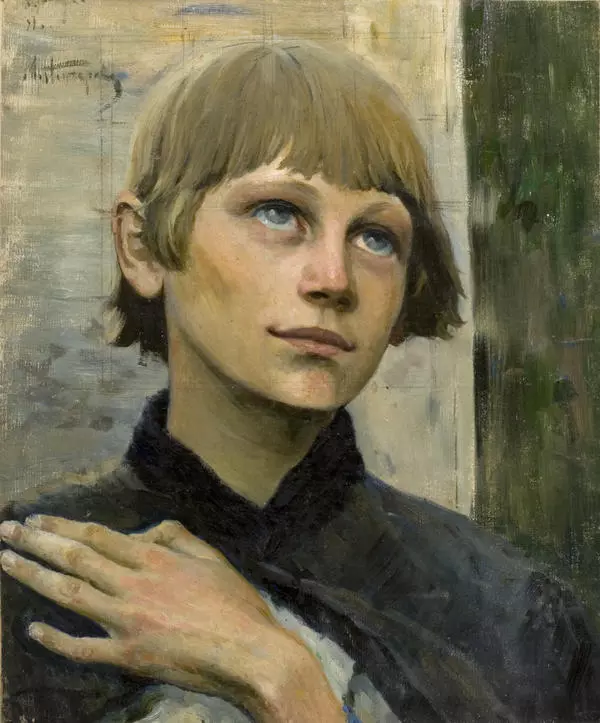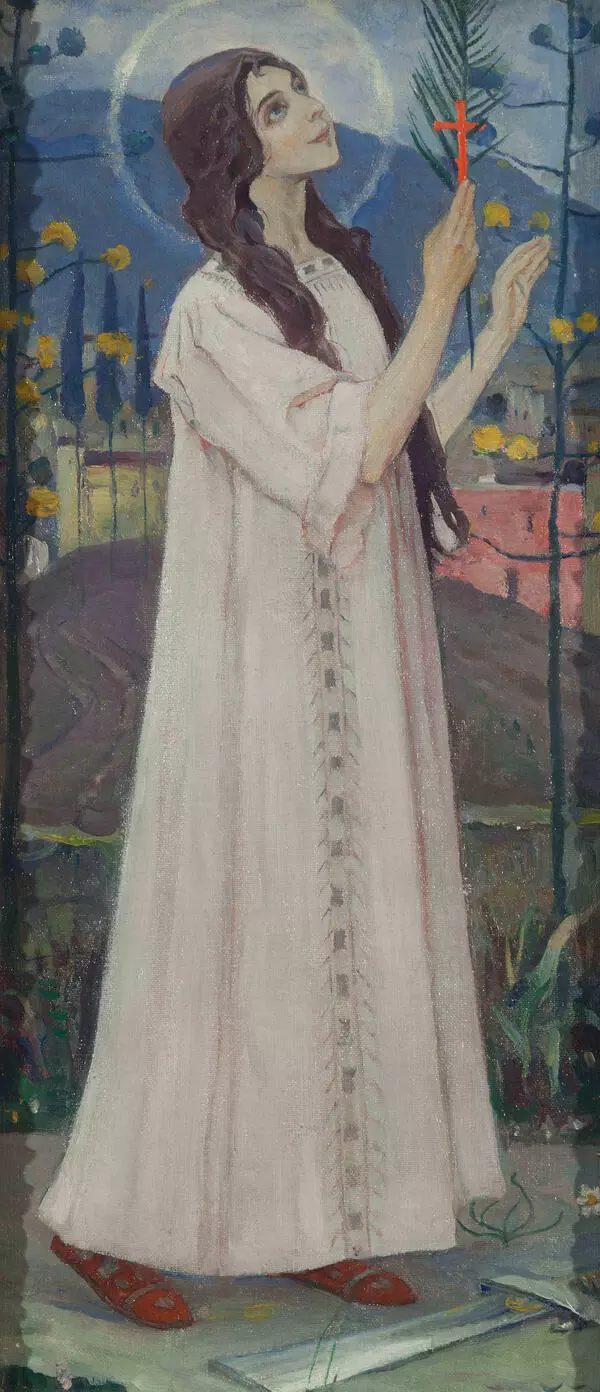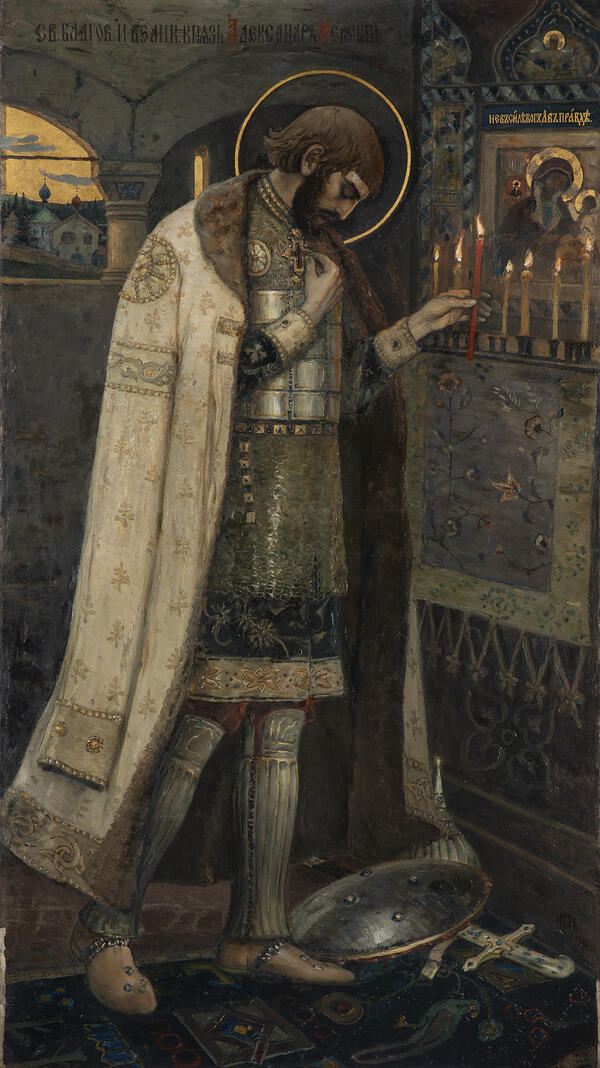The development of Mikhail Nesterov’s inner world was greatly influenced by his studies at the Moscow School of Arts, Sculpture and Architecture under Vasily Grigorievich Perov, one of the founders of the Society for Traveling Art Exhibitions (Itinerants).
Nesterov entered the School in 1874 at the age of 12. In his reminiscences, he emphasized Vasily Perov’s great influence on his students, who literally worshipped the master and admired his art. The mentor headed the life class, where future painters studied anatomy of the human body and drew sketches of people sitting for artists. The teacher was good at keeping the class in good spirits for the duration of the whole session, which allowed them to work long hours without feeling tired.
Education at the School was multi-staged. During the first stage, schoolboys developed techniques and learned to correctly hold pencils and brushes, made etchings from drawings by renowned masters and copied famous paintings. That was followed by studies in the life class. At that stage, plaster casts and statues were used as models, for the purpose of the class was to learn in minute detail how to depict a human figure. Young painters had to draw contours of sculptures of Hercules, Venus or Antonius hundreds of times, and as a result, many of them could draft an outline of an object starting from anywhere.
The teachers of the class were Professors Illarion Pryanishnikov and Pavel Sorokin. The sketch Portrait of an Old Man was created right in that period. The picture became the first serious work by the painter and was technically complex in terms of execution. The sketch is painted with oil on paper, which was an indisputable achievement for 16-year-old Nesterov. Despite the excessive degree of detail, the work is distinguished by high level of proficiency and testifies to Nesterov’s enormous gift as a portrait painter.
Most probably, the young Nesterov, while working on the painting, was assisted by his teachers, who looked after talented favorites. Mikhail Nesterov used to recollect that Professor Pryanishnikov would spend several hours correcting a sketch by a promising student, while paying no attention whatsoever to untalented ones.
For a sketch modified in such a way, Illarion Pryanishnikov, without reservation, could award the first prize at the examination. “Pryanishnikov favored me, and for a long time I was keeping a few excellent sketches touched up by him”, recounted Mikhail Nesterov.
Nesterov entered the School in 1874 at the age of 12. In his reminiscences, he emphasized Vasily Perov’s great influence on his students, who literally worshipped the master and admired his art. The mentor headed the life class, where future painters studied anatomy of the human body and drew sketches of people sitting for artists. The teacher was good at keeping the class in good spirits for the duration of the whole session, which allowed them to work long hours without feeling tired.
Education at the School was multi-staged. During the first stage, schoolboys developed techniques and learned to correctly hold pencils and brushes, made etchings from drawings by renowned masters and copied famous paintings. That was followed by studies in the life class. At that stage, plaster casts and statues were used as models, for the purpose of the class was to learn in minute detail how to depict a human figure. Young painters had to draw contours of sculptures of Hercules, Venus or Antonius hundreds of times, and as a result, many of them could draft an outline of an object starting from anywhere.
The teachers of the class were Professors Illarion Pryanishnikov and Pavel Sorokin. The sketch Portrait of an Old Man was created right in that period. The picture became the first serious work by the painter and was technically complex in terms of execution. The sketch is painted with oil on paper, which was an indisputable achievement for 16-year-old Nesterov. Despite the excessive degree of detail, the work is distinguished by high level of proficiency and testifies to Nesterov’s enormous gift as a portrait painter.
Most probably, the young Nesterov, while working on the painting, was assisted by his teachers, who looked after talented favorites. Mikhail Nesterov used to recollect that Professor Pryanishnikov would spend several hours correcting a sketch by a promising student, while paying no attention whatsoever to untalented ones.
For a sketch modified in such a way, Illarion Pryanishnikov, without reservation, could award the first prize at the examination. “Pryanishnikov favored me, and for a long time I was keeping a few excellent sketches touched up by him”, recounted Mikhail Nesterov.

